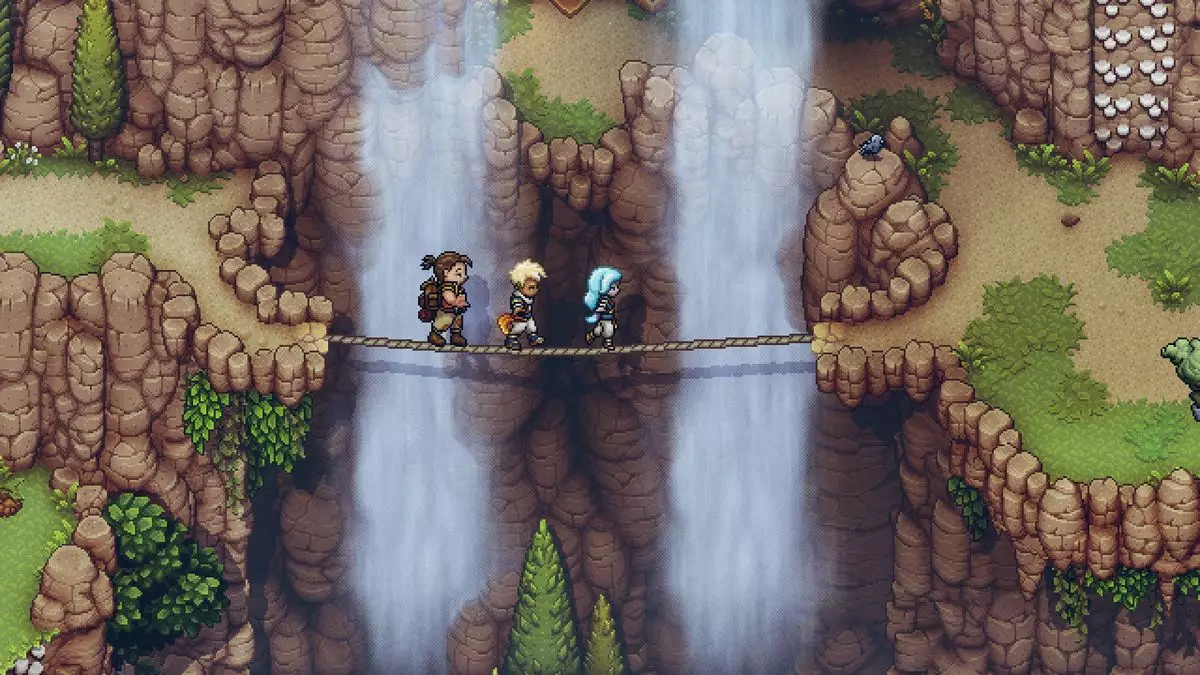The gaming landscape continues to evolve, but it often looks back to its roots for inspiration. One remarkable example of this is Sabotage Studio’s latest release, Sea of Stars, which embraces the cherished attributes of retro JRPGs while introducing fresh mechanics to engage modern players. Following the success of their previous 2D action game, The Messenger, this title is a testament to the indie development scene’s ability to meld nostalgia with innovation. It harks back to a time when pixelated graphics and turn-based combat were all the rage, giving players a sense of familiarity while simultaneously exploring new ground.
In discussing the creative process behind Sea of Stars, game director Thierry Boulanger highlights that Nintendo’s legacy played a pivotal role in shaping their design philosophy. The wealth of knowledge derived from over three decades of game development at Nintendo serves as a blueprint for many indie creators. “Every single game ever” provides a learning opportunity, according to Boulanger, underscoring the importance of absorbing lessons from the titans of the industry. The influence of titles like Super Mario Bros. 3 and The Legend of Zelda extends beyond nostalgia; it embodies the core tenets of game design, such as responsive controls, immersive level design, and an engaging soundtrack—all elements present in the very fabric of Sea of Stars.
Modern Mechanics with a Classic Touch
What sets Sea of Stars apart is not merely its retro aesthetic, but the contemporary gameplay elements that breathe new life into the old-school formula. Many indie games tend to approach retro styles with a simple homage, but Sabotage Studio has woven modernity into their design philosophy. For example, rather than sticking to singular-player experiences, Sea of Stars introduces cooperative gameplay that enables friends to join forces, making it a memorable social activity reminiscent of classic multiplayer titles. This forward-thinking element not only enhances the game’s replayability but also attracts a new generation of gamers who thrive on collaboration.
A Synthesis of Inspirations
While many nostalgia-driven projects often become trapped in the past, Sabotage Studio demonstrates how to successfully synthesize various influences into a cohesive package. Sea of Stars is billed as a prequel to The Messenger, creatively connecting both titles through thematic and mechanical ties. The incorporation of critical aspects from beloved classics like Chrono Trigger and Secret of Mana allows players to not only revisit fond memories but also explore fresh narratives that resonate deeply even today. It’s this blend of homage and innovation that positions Sea of Stars as a standout title in a sea of retro-inspired games.
As developers like Sabotage Studio continue to experiment within the framework of classic gaming paradigms, the future of indie gaming looks incredibly promising. Sea of Stars invites players to journey through a pixelated paradise that pays homage to gaming’s storied past while confidently stepping into the future. With an emphasis on core gameplay elements that resonate with audiences old and new, it highlights the ongoing relevance of 2D aesthetics in a 3D world. Ultimately, this fresh take on JRPG elements, paired with modern mechanics, exemplifies how nostalgia can be a powerful catalyst for innovation, ensuring that the legacy of classic gaming remains vibrant for years to come.

